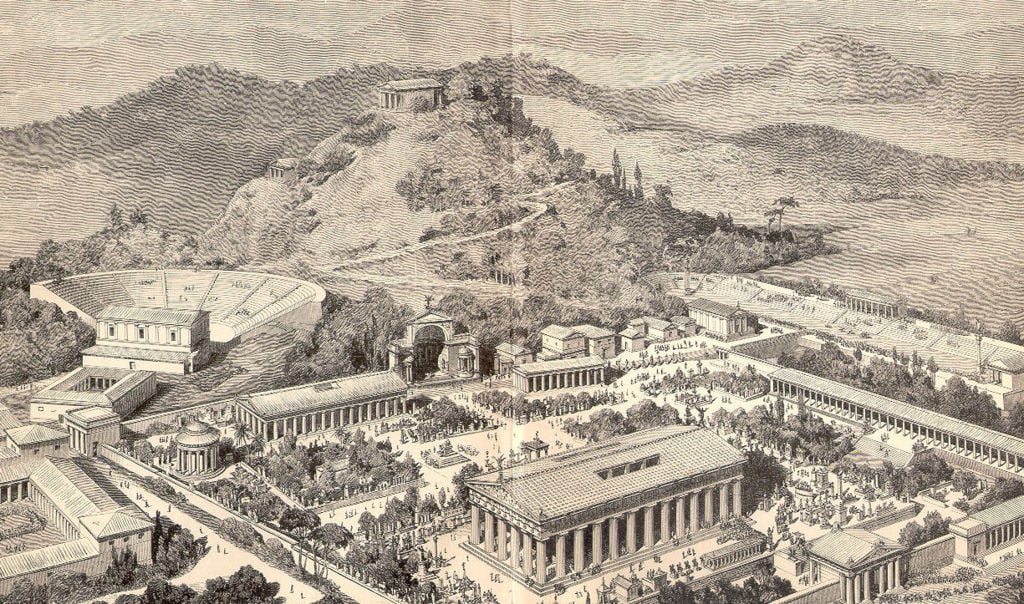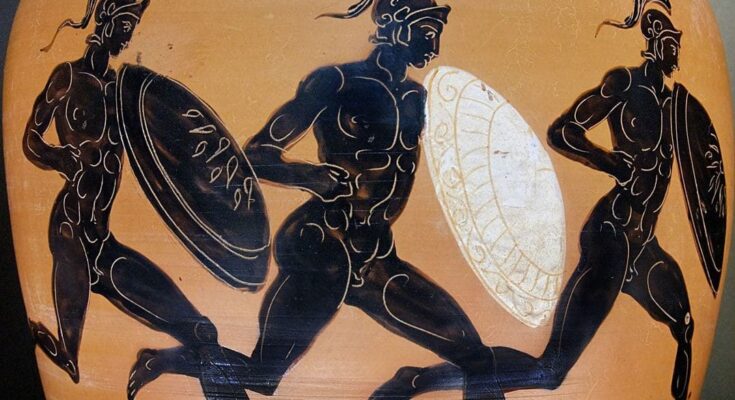How much have the Olympic Games changed since the first known Olympics held in the summer of 776 BC at Olympia, Greece? The last recorded celebration of the Olympic Games in ancient times was in 393 AD, almost twelve centuries before the beginning of the modern Olympics.
By
The Paris Olympics will be the 33rd Summer Games of the modern era, but they have a long way to go before they can compete with nearly 12 centuries of ancient Olympics. Athletes came from across Greece to compete in everything from running to discus to boxing to horse racing, in honor of the Greek god Zeus. The games dated back to 776 BC (and perhaps earlier), and ran at least to the end of the fourth century AD.
Most people probably have a sense of how the ancient games formed a template for the modern Olympics, but when you dig into the details of the ancient sources you start to see that things are not so simple:
1. The ideals of the Olympic Games changed
Many of the claims people have made about connections between the ancient and modern games are false. The Olympics presents itself as a vehicle for world peace and unity, justified by the idea that the so-called ancient Olympic “truce” involved a cessation in fighting across the Greek world during the games. But we now know that it was mainly just for protecting those who traveled to the games.
Then there is the elitist ideal of Olympic amateurism in the 19th and early 20th centuries. That was justified by the idea that ancient athletes competed just for the sake of it, but it is clear now that they were in it for money.
The history of the triple jump is the strangest of all. It was invented for the 1896 Athens Olympics in response to an ancient text recording a long-jump record of more than 15 meters. When you look at the text more closely, it becomes clear that the distance was meant as a joke.
2. Holy cow!
Misleading claims like these have generally been based on a relatively small number of literary texts from the fourth and fifth centuries BC (the classical period). But if you really want to understand ancient sport you need to look also at the thousands of surviving athletic inscriptions carved on stone from the last three centuries BC (the Hellenistic period) and the Roman Empire (from 31 BC onwards): few other texts give such a vivid glimpse of ancient day-to-day life.
When you look at that material you realize just how bizarre and alien some aspects of ancient sport were by modern standards, especially the religious element. Imagine cows being sacrificed between races in the middle of a modern Olympic stadium, for instance.
3. Calendar crunching
Yet this material also points us to some surprising similarities between ancient and modern. Many have argued that complex and bureaucratic sporting events were only developed in the 19th century. The evidence from the Roman Empire shows that this can’t possibly be right.
Greek athletics flourished in the Roman Empire, and the Olympics in particular underwent a revival, especially through the sponsorship of successive emperors. The Olympics was the lead event in a calendar that involved probably more than 500 independently organized annual festivals across the eastern Mediterranean. The organizational complexity and financial investment were enormous.
4. Construction time again
The media has been full of the usual stories about the race to get Olympic buildings finished in the previous Games in Tokyo. At least in the ancient world, sports festivals stayed in the same place, so buildings could be reused.

Yet preparation was far from straightforward. The following text, dating probably from around 240 BC, describes preparations for the Pythian festival (second only to the Olympics). It lists over 40 tasks, each with a large price tag and building contractor:
Digging and leveling the covered practice track and the colonnade… digging and leveling the open-air practice track… provision of 270 medimnoi (about 14,000 litres) of white earth for the covered practice track… fencing of the covered practice track…
Maintenance of the covered and open-air practice tracks, the rooms for ball games, and the gymnasium… cleaning out of the Pythian stadium and renovation of the surrounding embankments… digging of the Pythian stadium, and digging and leveling of the jumping pits… construction of the auditorium.
There is evidence, too, of public-private partnerships, where rich individuals paid for works that would be available for profit-making outside festival time.
5. Opening ceremonies at the Olympic Games
The torch relay wasn’t an ancient institution. It was invented by the German classical scholar Carl Diem for the 1936 Olympics in Berlin, and glorified through Leni Riefenstahl’s film “Olympia.”
Our modern Olympic opening ceremony does have some ancient parallels, however. As far as we can tell, there was a procession from the city of Elis 30 or 40 miles away. It seems to have included all the athletes and umpires, presumably with lots of fans tagging along. It involved stops for ritual purification with pig’s blood along the way.
On arrival in Olympia, the umpires would sort the athletes into age classes, deciding who should compete in the boys’ category and who in the men’s. Then the athletes would swear oaths on slices of wild boar’s flesh in front of the statue of Zeus, promising good conduct.
But possibly a better precedent for the complexity of the modern preliminaries is the ancient tradition of sending out envoys (theoroi) across the Greek world. They would notify other cities of the Olympics and invite them to send ambassadors to celebrate membership in the wider Greek community. They visited dozens of cities, highlighting the festival organizers’ great care to maintain contact around their world. It must have taken many months in all.
6. How security changed for the Olympic games
We have heard a lot recently about concerns over security at the Olympic Gamea. Security mattered at the ancient games too. It’s hard to find parallels for modern terrorism, but ancient crowds could get rowdy. Famously, there were riots in Pompeii after a gladiatorial contest in 59 AD.
Ancient officials watched out for cheating competitors, but they could also target spectators. They were known most often as “mastigophoroi,” or whip-carriers. There is evidence that they wore distinctive uniforms and also carried sticks and shields. We might not quite be ready for Tokyo security officials with whips, but this concern with public order is another sign that some things in the Olympics have changed less than you might imagine.
is a Professor of Greek at the University of St. Andrews. The article was first published at The Conversation and is republished under a Creative Commons License.



